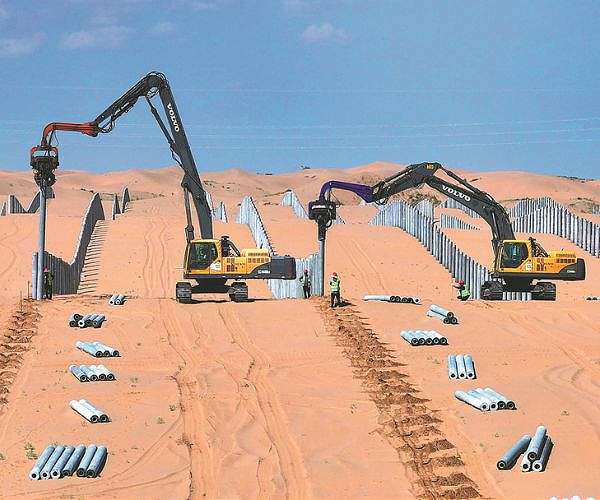‘Solar Great Wall’ aims to power Beijing and curb desertification by 2030
Ordos in Inner Mongolia is leading an ambitious ‘Solar Great Wall’ project, combining renewable energy development with ecological restoration, as reported by local officials.
This massive solar energy initiative, which averages 400 km in length and 5 km in width, is designed to provide sustainable energy to Beijing and nearby regions while supporting the conservation of the Yellow River, a crucial waterway in China.
The project, which started earlier this year, has a planned total installed capacity of 100 million kilowatts and aims to generate about 180 billion kilowatt hours of electricity annually by 2030, the Ordos energy administration said. To put this into perspective, Beijing consumed 135.8 billion kWh of electricity last year.
Located along the southern bank of the Yellow River and on the northern edge of the Kubuqi Desert, China’s seventh largest desert, the project is also expected to play an important role in reducing soil erosion, preventing sediments from entering the Yellow River penetration and restoration of soil erosion. almost 27 million hectares of desert.
Li Kai, an energy administration official of Dalad Banner, noted in an interview that the project will bring great economic and environmental benefits. About 133 km of the “Solar Great Wall” will be built within Dalad, where the section will average 25 km wide. This development will increase Dalad’s renewable energy capacity to 19 million kW by the end of the decade.
“The project will generate an annual production of 38 billion kWh of green energy, saving nearly 12.6 million tons of standard coal and reducing CO2 emissions by about 31.3 million tons,” Li said.
By 2030, Dalad aims to transport 48 billion kWh of renewable electricity annually to the Beijing-Tianjin-Hebei region using an ultra-high-voltage transmission line currently under construction.
The solar panels will not only generate energy, but also help combat desertification by acting as a wind barrier and providing shade to limit evaporation of soil moisture. In addition, 2,400 hectares of crops will be grown under the panels to further combat desert conditions, demonstrating the government’s commitment to an approach that harmonizes environmental and economic progress, Li said.
“All projects are financed by state-owned enterprises, including those controlled by the central government, which means local governments do not need to invest financially,” Li explained.
Li also pointed out that the Dalad local government has established streamlined approval sessions and appointed officials dedicated to facilitating project processes at various stages.
“A total of about 50,000 jobs will be created by 2030, with an average annual income increase of more than 20,000 yuan ($2,815),” he added.


